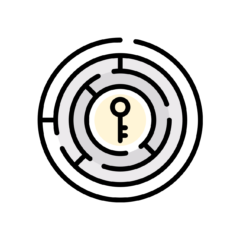One of the first questions I ask candidates during an initial phone call is ‘why are you considering new opportunities?’ A significant portion of the time the answer is ‘a lack of growth opportunity at my current employer.’
To me this indicates a company either doesn’t have a viable career transition plan in place or that an employee has tried to expand his or her opportunities and has met with resistance. It is important to note that almost all medium to large employers have standard guidelines in place to qualify for internal promotions such as a specific amount of time in your current role and a minimum score on performance reviews. If I am considering an internal candidate for a role, I always check these two factors before even submitting a candidate to a hiring manager.
When I am considering a candidate for a role that is a career advancement for them, the most important factors for me are: do they have the requisite skills for the position, and does the candidate have enough demonstrated experience using those skills to justify a level change (i.e. from a ‘software engineer’ to a ‘senior software engineer’, or a ‘staff accountant’ to a ‘senior accountant.’) If a candidate has earned a certification or taken vocational training to enhance their skills, I am looking for academic/portfolio pieces that reflect the training they pursued; these need to be on their resume in detail and reflect actual work that the candidate expects to be doing with the new found skills. I prefer to see this sort of career enhancement on an internal rather than external candidate, because they can work with their current lead or manager on ‘stretch’ assignments that allow them to build relevant work experience immediately.
Stretch assignments are a great way to try new opportunities with you current employer. Talk to your manager about adding some duties to your regular workload. For example, if you are the company receptionist, ask if you can help the HR or recruiting department schedule training or interviews, or work with some of the Executive Assistants on travel arrangements. If you can consistently balance your regular workload with extra projects for a few months, that is a signal that you are ready to move on in your career. Some companies do have formal stretch programs or career ‘rotations’ where you can formally spend time in a new role exploring options. Check with your HR department to see if these exist.
I look for a progression of responsibility on a resume for a candidate looking to advance in their career. A year is about the minimum amount of time in a specific job to learn it. Eighteen months to two years is a preferable amount of time to learn and become proficient in a specific job. Volunteering is also a valid way to display skills, especially if they enhance your current career path. Teaching and writing are also a great way to display skills that may or may not be part of your ‘day’ job. Writing can include a blog that discusses the area you are hoping to move into regularly (including detailed examples of the topic and your opinion or ways you are using the information). If you are pursuing a tech career, Github projects are key.
An example would be a friend that had a career in legal operations for over ten years, but who volunteered for a local music non-profit for three years as the Executive Director as well as managed an indie band part-time. After moving to NYC, she was looking for a new job but was trying to figure out how to include both aspects of her career interests to increase her marketability; my advice was to use two distinct resumes, one for each separate career track. She did that and ended up in a legal operations role and volunteering for a social justice non-profit that she is hoping to turn into a full time job eventually.
BR/>
